Ready to supercharge your back workout and start gaining size and strength throughout your back? The back is one of the toughest areas to work out effectively, because it’s made up of a bunch of small muscles that take time to really shine. It can also be tricky to really feel those muscles burning during your back workout… So it’s easy to become disillusioned.
Which is why it’s so important to find the best back exercises and stick to them consistently. The combination of effective exercises and consistent progressive overload, you can build a great-looking back with some good strength in a few months.
Here’s everything you should know to put together a killer back workout, with the right movements to build muscle. Plus, a few tips to maximize your success and reduce the chance of injury. Let’s dive in!
Jump to:
Why Should You Train Back?
The back muscles need consistent, targeted training to grow in size and strength. Few other compound exercises end up targeting the back muscles, so it’s essential that you do a full back workout at least once a week.
Many people hit the gym, start training, and then begin to see positive changes in areas like the biceps, the chest, and the abs. These muscle groups are naturally easier to see, so they tend to be focused on quite a bit… Sometimes, to the detriment of other, less visible muscle groups, like the shoulders and the back.
Also, the back may be a major muscle group, but the back muscles are smaller than you might realize. You need to train back hard. You can’t just add a few back exercises to the end of your arm day and leave it at that. It needs its own targeted workout day for you to really see results.
Benefits of Training Your Back
Aside from building a well-rounded, aesthetically-pleasing physique that isn’t front-heavy, training your back has numerous practical advantages.
Improved Posture
This is especially important if you work behind a desk all day. Actively working your back muscles first of all gives them a good stretch and gets them working after they’ve been still and cramped all day.
Secondly, regular back workouts strengthen those muscles so that you’re able to maintain your posture for an extended period of time while sitting behind a laptop, sitting on the couch, walking around, gardening, and so on.
Reduced Risk of Injury
Your back muscles play an important role in stabilizing your spine during other movements in the gym, as well as your everyday movements. The stronger your back, the less chance you have of injuring yourself, both in the gym and during normal movements.
Having strong back muscles also gives you a bit of an advantage if you happen to have some sort of accident. While they won’t necessarily prevent injury in the case of trauma, they can help to protect your spine from damage.
Increased Strength
You may be surprised at how many other movements recruit the back muscles. The stronger they are, the stronger you’ll be overall, especially when it comes to lifting motions. The more you train back, the more you’ll find your other big lifts increase.
This is because a strong back supports your body throughout any given movement, so you’ll be more likely to do it with good form (although you still need to pay attention to your form). With a strong back behind you, you’ll be in a better position to increase your overall strength without injury following you.
Enhanced Athletic Performance
As we’ve already mentioned, your back plays an important supportive role in many movements, not just in the gym. The more you work your back out and gain strength, the more likely you are to develop better athletic performance in your other sporting ventures.
For example, a strong posterior chain can make a huge difference in performance to a runner, as they’ll be able to maintain proper upright form and find it easier to cultivate an effective stride. For swimmers, strong back muscles will give them an advantage when it comes to propelling themselves through the water effectively.
Pretty much all sports will benefit from the sportsman or woman having more developed back muscles, both in terms of performance and injury risk.
Aesthetically-Pleasing Physique
A well-balanced physique is key to making it aesthetically-pleasing. Focus too much on chest and biceps and neglect your back, and you’ll be akin to those “bodybuilders” who have spectacular upper bodies but chicken legs!
Your back muscles should complement your chest and biceps. If you’re weightlifting for aesthetic reasons (and most of us are, to some extent), it’s essential to work out all your muscle groups fairly equally to prevent looking out of proportion.
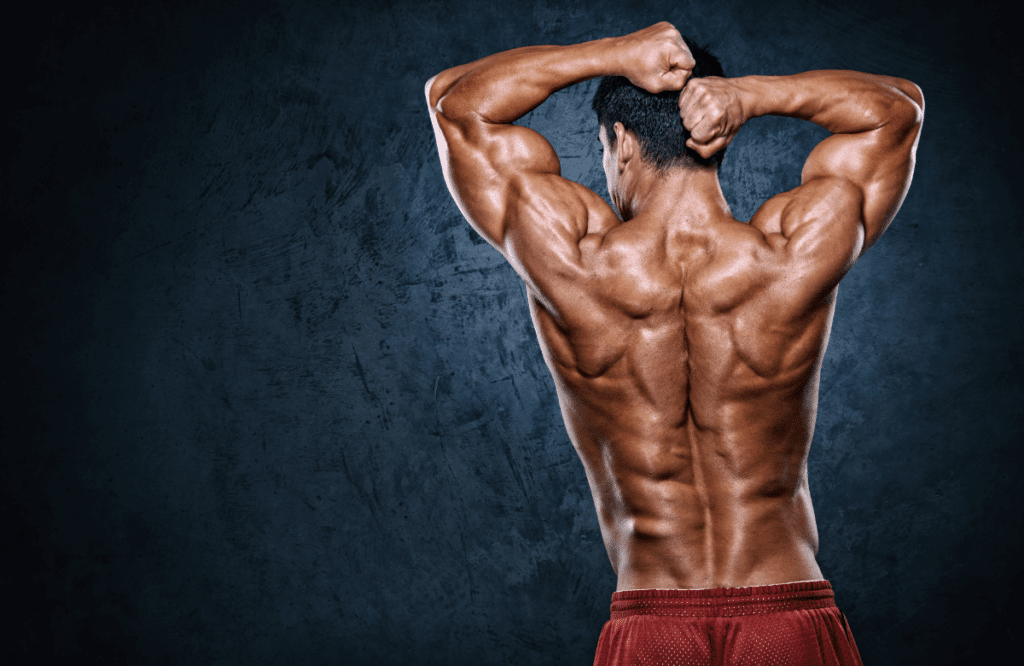
How Often Should You Train Your Back?
There’s no absolute right or wrong answer here, but it’s generally accepted that 10 to 20 sets of back exercises per week is enough for building muscle.
Depending on your schedule, you can do these all in one workout, or do most of them in a single workout and throw in a back-focused exercise on another day or two.
If you’d like to split them up, we recommend choosing your exercises smartly. For example, chin-ups work the biceps pretty well, but they also hit the back, so doing them on your arms day would be a good choice.
How Many Exercises Should You Do Per Workout?
You don’t have to do a ton of back exercises to maximize your gains. Stick to 3 to 5 carefully-chosen exercises per workout (that hit every area), with 3 sets for each. You should be aiming for 4 to 6 reps per set for men, and 8 to 10 reps per set for women.
How Long Does It Take To Build Back Strength?
The answer to this question will be different for everyone. It depends on many different factors, including how often you’re training your back muscles, how heavy you’re lifting, and if you’re exercising with good form.
If you’re new to the gym and you do your back exercises right from the start, you can expect to see noticeable gains in muscle mass, strength, and muscle definition in as little as a few months. But if you’re already well-built and you’re looking to gain a bit more strength or muscular shape, the changes will be more subtle over time.

Best Back Exercises to Build a Stronger Back
Some back exercises are better than others, and here’s our list of the best of the best. We highly recommend opting mainly for compound exercises especially if muscle hypertrophy is your goal, but make sure every one of the muscles in your back gets hit during your week.
Isolation exercises are great for focusing on those muscles you feel didn’t get a good workout during the compound exercises, or for nailing certain muscles that you want to grow more than the others. You can also do most as either barbell exercises or dumbbell back exercises, which makes them pretty versatile.
Best Compound Back Exercises
Compound exercises allow you to lift heavy by recruiting other muscles to assist. They also tend to hit multiple muscles in the back, making them great for getting the most bang for your buck. It doesn’t matter if you’re a guy, a girl, a newbie, or experienced, these are the best ones to choose.
Barbell Deadlift
Load the bar and get into a standing position with your feet a little closer than shoulder-width apart. Your toes should be pointed slightly outwards with your feet flat on the floor, and the bar should be about an inch away from your shin as you stand.
Push your glutes back and bend at the knees to get into the starting position. Grab the bar just outside of your legs—you can use a pronated grip or a mixed grip (one overhand, one underhand) if it’s more comfortable.
Important: Your thighs should be not quite parallel to the ground. Take care not to go too low, or you’ll end up squatting the weight upwards instead of deadlifting it.
Take a deep breath, tighten your abdominal muscles, and stand up straight by driving your heels into the ground. As you get to the top, lock your hips and make sure not to overextend your back.
We recommend not just dropping the bar at this point, but instead lowering it back down in a controlled manner to get even more out of the movement.
Hint: Every now and then, try deadlifting with a trap bar (also called a hex bar). Trap bar deadlifts keep your wrist in a neutral position and you may find that you can lift 5 to 10% more weight. Maintain good form though!

Barbell Bent-Over Row
Another staple for a great back. To perform a barbell bent-over row, start by standing over a loaded barbell with your feet about shoulder-width apart. Bend and grab the bar with your hands a little more than shoulder-width apart, with an overhand grip.
In this position, lift your hips until your back is roughly parallel to the floor. Don’t lift the weight off the floor at this point—rather, you want to lift the weight from its position on the floor and return it to the floor after each rep. This will help you to lift heavier and keep your back in a more neutral position throughout the movement.
Take a deep breath, tighten your core muscles, and lift the bar to your torso. Lead with your elbows, and squeeze your shoulder blades together at the top of the movement. Use your muscles to lift, NOT momentum. Lower it in a controlled way, back to the floor.
Your elbows should be angled between 45 and 60-degrees to your body as you lift. If you find that you can’t touch your mid-chest with the bar, try mixing up your grip width. If it still doesn’t work, choose a lighter weight.
Other row variations include the T-bar row, landmine row, dumbbell rows, and resistance band rows.

Pull-Up
Grip the pull-up bar or any stable horizontal bar with an overhand grip, your hands a little more than shoulder-width apart. If your feet are still on the ground at this point, lower yourself until your arms are fully extended and then lift your feet off the ground.
Important: Your shoulders should be loose and not activated at this point. This is known as a “dead hang”. The first step to lifting yourself in a pull-up is to activate those shoulders into what’s known as an “active hang” before pulling yourself up.
From your loose hanging position, and without using any momentum from swinging your feet, lift yourself to the bar. Think of driving your elbows downwards, as if you’re pulling the bar towards you rather than pulling yourself to the bar.
The goal is to get your chin above the bar, without straining your neck. You don’t want to extend your neck to try and get it over the bar. The better goal is to eventually be able to hit the bar with your chest, but this might be easier after you’ve built up some strength.
Once you’ve got your chin over the bar, lower yourself gently until you’re in a dead hang again. You should feel a deep stretch in your lats in this position.
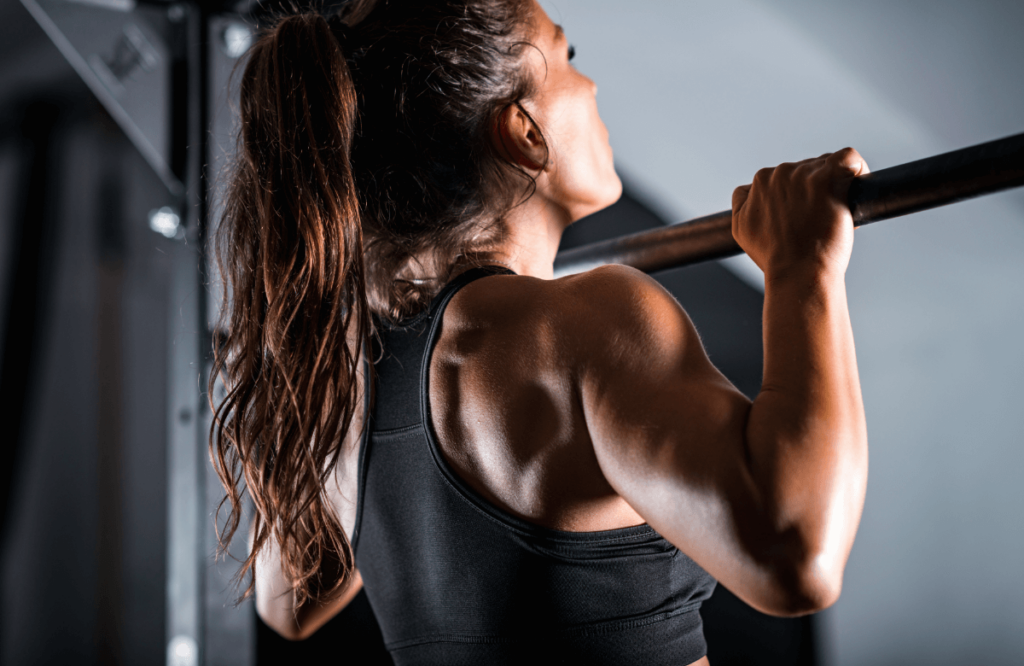
Chin-Up
The chin-up is another superb lat exercise, but it catches your biceps more than a pull-up does. Everything applies the same way it does for a pull-up, except you use a supinated grip.
Inverted Row
An inverted row can be thought of as an almost-horizontal pull-up. If you can’t do a pull-up yet, this is the best way to start!
You can use the Smith machine for this one, or set up a barbell in a squat rack (as long as nobody’s using it for leg day). It should be just high enough that if you lie under the barbell, legs fully extended, holding it with both hands, your body will be off the floor.
This is your starting position. You want your body to be in a tight, straight line from neck to toe, which you can do by tightening your abs and your glutes. The goal is to lift your chest to the bar by squeezing your lats.
Think of pulling your elbows downwards towards the ground as you lift yourself. Hold it for a second at the top before lowering yourself with control. Make sure not to arch your back as you do this movement—stay straight as mentioned above.
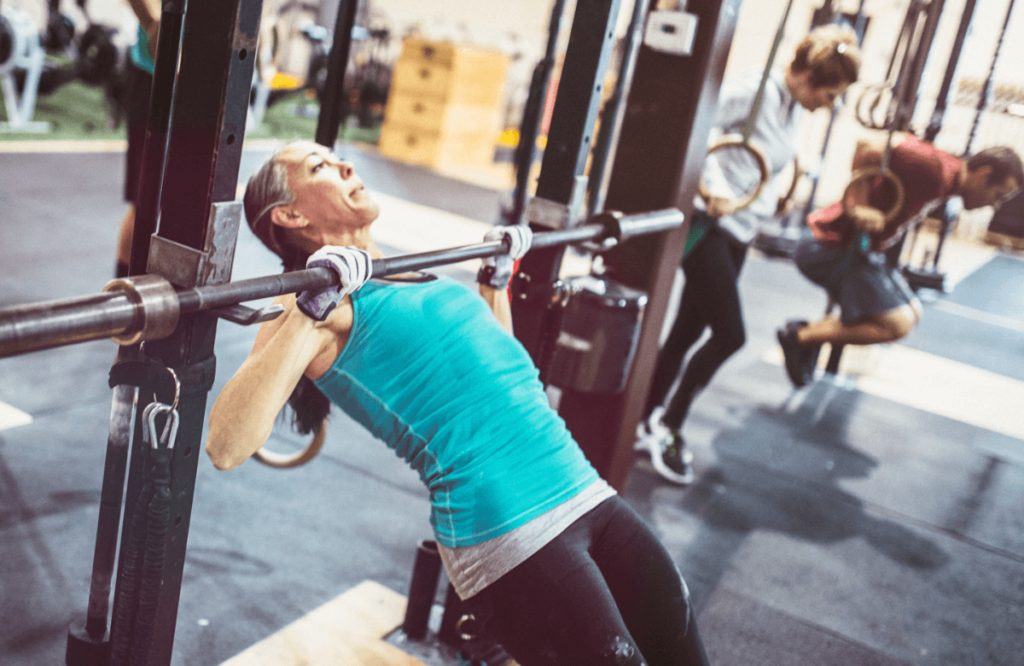
Lat Pulldown
Just about every gym has a lat pull-down machine. This is a great exercise for those who don’t yet have the strength to do pull-ups, but it’s also a worthwhile one even for those who can pull-up with ease.
Grab the bar with an overhand grip, shoulder-with apart. You’ll likely have to do this while standing, and as you sit, the bar will pull down. Keep your arms fully extended and nudge yourself forward until your knees are under the knee pads.
This is your starting position. From here, imagine pulling your elbows towards the floor. The bar should get past your chin (for advanced lifters, it should touch your chest at its lowest point), and then you should maintain your grip on it and allow it to rise back to the top in a controlled way.
Keep your core tight and avoid leaning backwards or using momentum. You can vary your grip width on lat pull-downs to place slightly different emphasis on the back muscles.
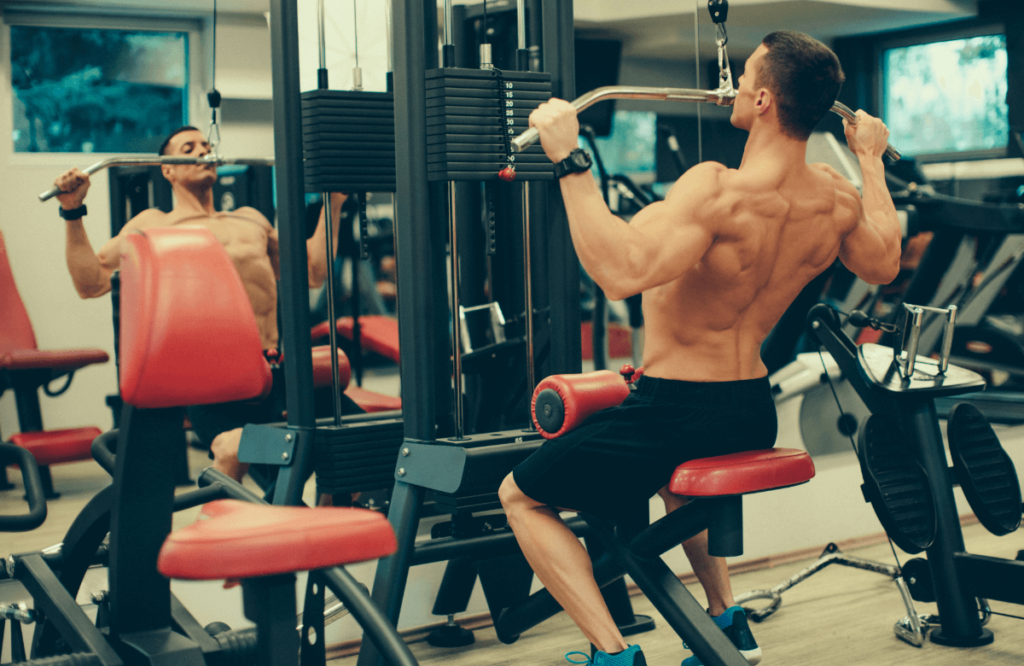
Hyperextensions
These are underrated, but they’re great for building lower back strength. Most gyms have a back extension machine, which is angled at around 45 degrees and anchors your feet.
Adjust the upper pad of the machine so it rests against your upper thighs but still allows you enough freedom to bend fully at the waist. Tighten your abs and cross your arms across your chest. Your body should be in as straight a line as possible.
Bend at the waist, slowly and carefully, keeping your back straight. You’ll also feel a stretch in your hamstrings and glutes as you do this. Go as far as you can before feeling your back wanting to round. This is as far as you can go before tightening your core even more and lifting yourself up back up. Don’t push any further, because rounding your back can cause injury.
Make sure not to arch your back coming up as well. You should be using your glutes, hamstrings, and lower back muscles to lower and lift yourself safely, with your back always in a straight line.
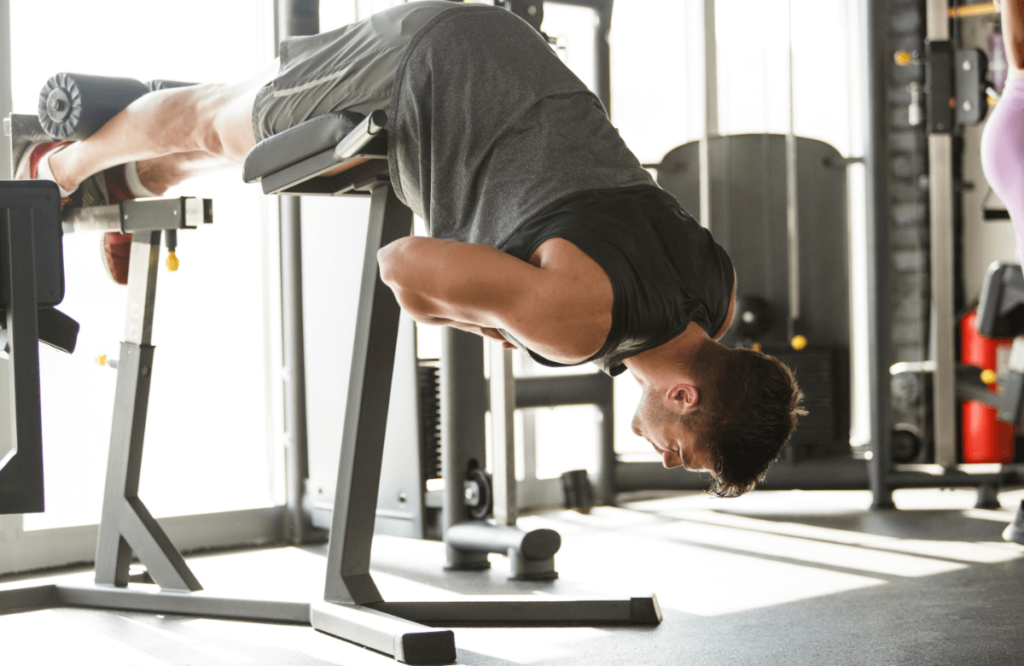
Best Back Isolation Exercises
Isolation exercises are great for targeting specific parts of the back and rounding out your workout to ensure you hit every area.
Single-Arm Dumbbell Row
These target the lats quite well and can be done one arm a time, which helps to iron out muscle imbalances. You can do them with both arms at once if you prefer, which could be a good choice if you’re short on time.
You need a flat bench or at least a flat surface slightly lower than knee-height. Place one knee and the same-side hand on the surface, keeping your back in a straight line. Pick up the dumbbell in the opposite hand.
You want to loosen your shoulder so the dumbbell hangs in your hand. The first step to this exercise is to lift the shoulder into its socket properly before rowing the weight back and up.
Imagine that you’re trying to pull the weight towards your back pocket, rather than up towards your ribs. Keep your elbow tucked as close to your side as possible and make sure not to swing or twist your back as you do the movement.

Face Pull
Face pulls catch the upper back really nicely, although they’re technically a rear delt shoulder exercise. Start by grabbing each end of a rope with a neutral grip (palms facing each other). The rope should be set at about chest height.
Make sure the weight is manageable. You want to be able to do 6 to 8 reps and be challenged, but not feel like you can significantly more than that.
Holding the rope, take a step backward until your arms are fully extended. You can stand with your feet shoulder-width apart, next to each other or staggered, whichever feels best.
Pull the rope towards your face, with each hand going towards your ears. Keep your elbows upwards as much as you can, and think of driving them backwards as you pull. Squeeze your upper back as you do so, hold for a second, and return slowly to the starting position.
Seated Cable Row
Most gyms have a seated cable row machine, so it’s as simple as choosing your weight, sitting down, and doing it with good form. You’ll get a great mid- to upper back workout with some shoulder activation as well.
Position yourself on the seat so you’re holding the handle with outstretched arms, your knees are slightly bent, and your back is straight and not curved. Tense your core, move your shoulder blades down and back, and you’re ready to row.
Pull the handle towards your lower abdomen. Keep your elbows close to your torso and squeeze your shoulder blades together at the end of the movement. Avoid leaning backwards when you do the movement.
It’s also good to know that these machines come with a variety of handle attachments, so use whatever you can to get a good neutral grip and do the exercise with proper form. And if you can’t find a machine, wrap a resistance band around something stable and use that!
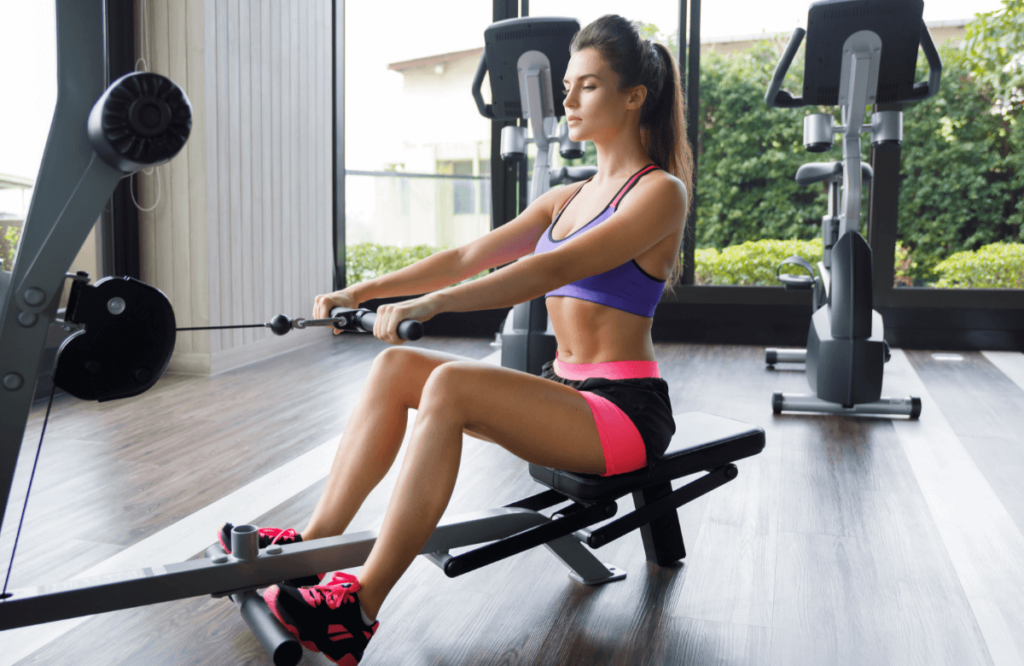
Straight-Arm Pulldown
This old-school move is a back killer, and it targets other muscles too. You’ll need a cable machine for the straight-arm lat pulldown, and plenty of space.
You can use either a straight bar attachment or a rope, which will give you slightly more range of motion. Step back from the machine, holding the attachment, and hinge a little at the waist.
Your arms should be fully extended. They should almost create a straight line with your torso. This is your starting position.
Breathe deep, tense your core, and bring your arms down to your waist by contracting your lats. DO NOT bend your elbows! Keep your arms straight throughout the movement and keep the slight bend in your waist.
If you struggle to pull it down from there, either lower the weight or stand up a little straighter, so you’re not pulling from above your head. Make sure you control the movement on the way back up as well.
You should feel this in your lats, but you’ll also get some shoulder and tricep activation. It’s an excellent compound exercise!
Common Back Training Mistakes Hurting Your Gains
Want to grow a stronger, sleeker back? Assess yourself and make sure you’re avoiding these muscle-killing mistakes.
Overtraining Upper Back & Neglecting Lower Back
It can be easy to nail the upper back muscles, because it’s activated in plenty of compound movements. But the lower back sometimes gets a little neglected, which means you’re going to look a bit out of proportion if you don’t give your lower back some TLC.
If you do a dedicated back day in the gym, make sure you’re splitting your exercises evenly so every part of your back gets a good workout.
Lifting Too Heavy
The back is naturally stronger than smaller muscles, so it’s tempting to pile on the heavy weight plates and lift as heavy as you can. But lifting too heavy can actually hamper your progress… And increase your chance of injury.
You don’t have to stick to a completely light weight. Choose a weight that you can lift with perfect form for 4 reps (men) or 8 reps (women). Work with that same weight until you can add 2 extra reps without losing your strict form. When you get to 6 or 10 perfect reps, increase the weight slightly.
Using Momentum
Every part of your movement should be slow and controlled. Using momentum to help you lift weights takes half the work out of it… So you can expect to get half the muscle growth. Make sure you’re actively working against gravity every time you lift, and not taking advantage of bounce.
Incorrect Posture
The wrong posture can ruin the entire movement by accidentally engaging the wrong muscles or muscle fibers. You might think you’re working your lats, but you could be shifting the work onto the triceps instead just by the way you’re positioned.
Take time to get your form right, from posture to movement. Practice in front of a mirror. Ask for advice. Video yourself. Do whatever you can to make sure your posture is correct before you start lifting.
Tips for Getting the Most Out of Your Back Workout
Ready to build the back of your dreams? Here are some small tips and tricks to help you make the most of your back workout every time.
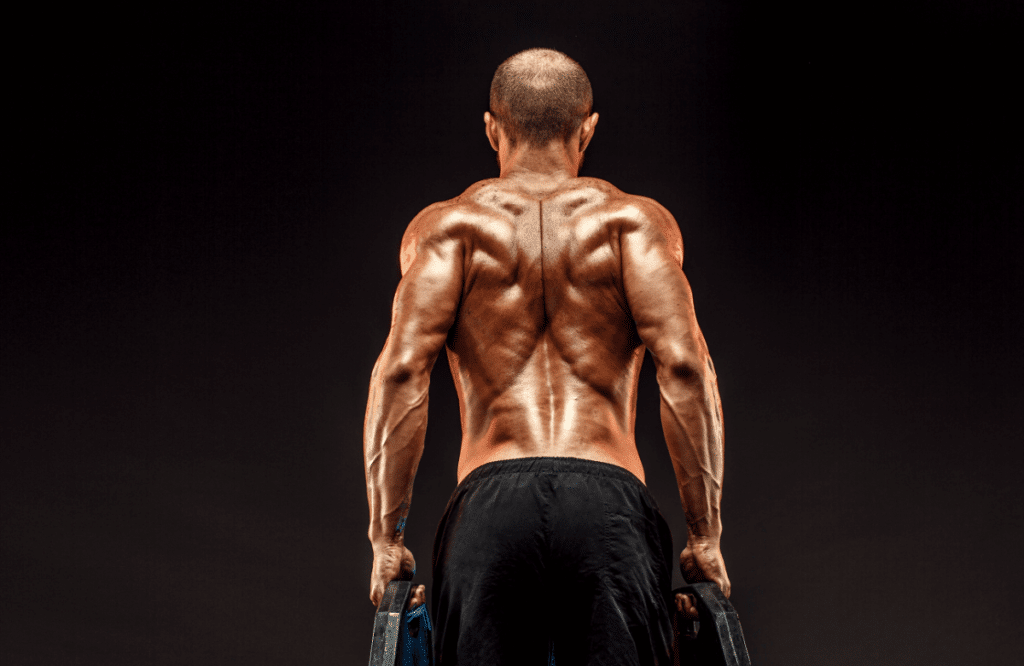
Use a Wrist Strap
If your grip is stopping you from going heavier on your back exercises, a wrist strap will be your best friend. We advise getting two, so you can maintain an even grip and lift with things like deadlifts, and then switch over to unilateral exercises like one-arm dumbbell rows.
Using a strap doesn’t mean you’re weak, so don’t be afraid to make good use of it in the gym. That being said, we highly recommend the next point so you can eventually move away from it.
Strengthen Your Grip
A wrist strap will help if your grip is weak. But you’re only as strong as your grip strength, so if this is a weak point for you, add some targeted wrist and forearm exercises to your routine. The stronger your grip, the heavier you’ll be able to lift.
Vary Your Grip
In some cases, switching up your grip can help you gain more range of motion, like with a bent-over barbell row. An overhand grip works well, but switch to an underhand grip and you’ll likely be able to row back a couple of inches more. Your grip strength may change depending on how you grip the bar as well, so you might find one that works better for you.
Also, change between wide grip and narrow grip sometimes and see how different they feel. You might want to include both wide and narrow grip sets of particular exercises to hit those muscle fibers fully.
Experiment with grip and switch it up when you feel you need to. The same is true for most other exercises—your grip can change the muscle activation slightly and should be considered as an alternative way of doing the same old exercise.
Pull With Your Elbows, Not Your Hands
For rows, lat pulldowns, pull-ups, and other similar movements, imagine that you’re pulling from your elbows, not with your hands. In other words, think of driving your elbows back or down, rather than pulling the bar down or yourself up.
Your elbow is like the lever that activates the back muscles. If you’re pulling with your hands, you might be missing the chance to really target those muscles, so use the lever as a lever!














